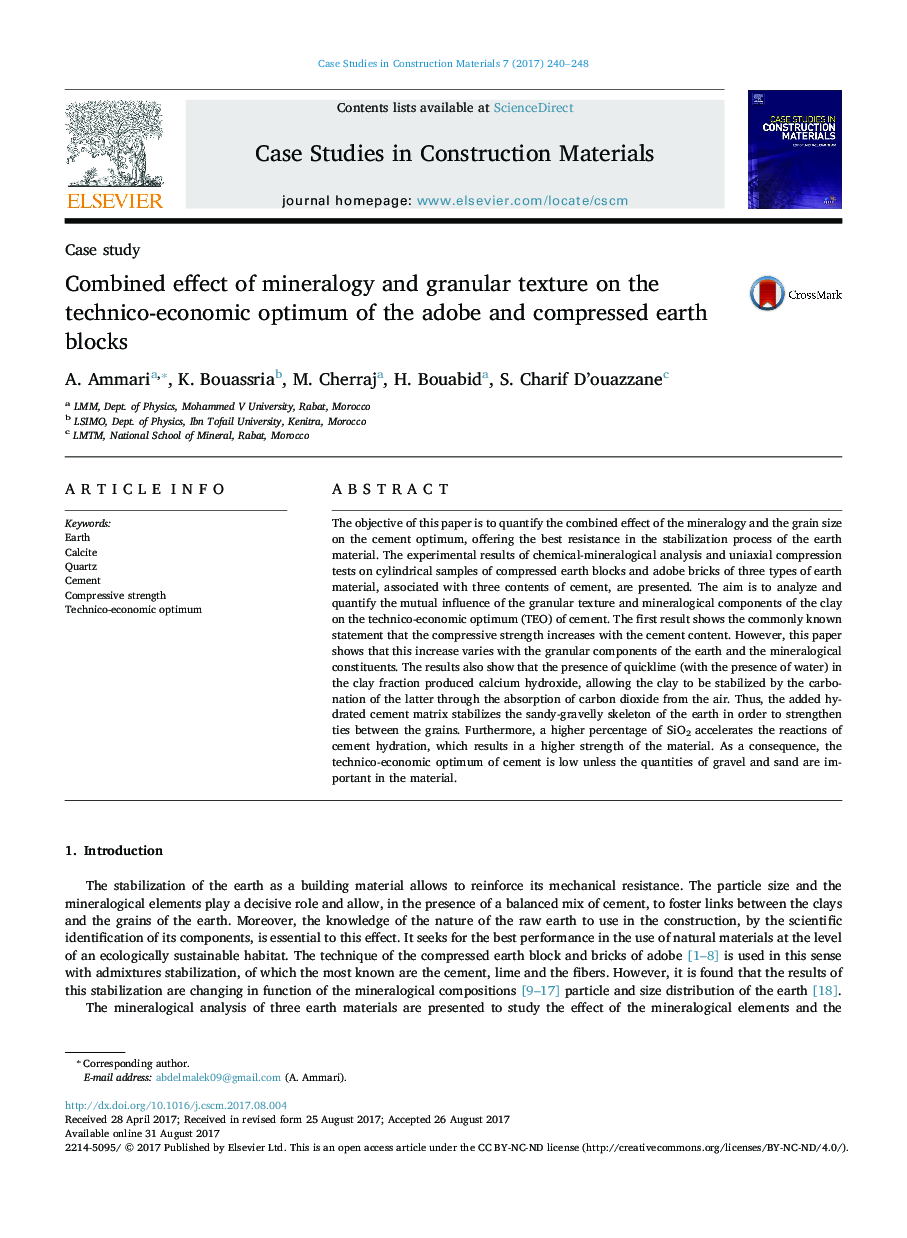| کد مقاله | کد نشریه | سال انتشار | مقاله انگلیسی | نسخه تمام متن |
|---|---|---|---|---|
| 4911583 | 1428459 | 2017 | 9 صفحه PDF | دانلود رایگان |
The objective of this paper is to quantify the combined effect of the mineralogy and the grain size on the cement optimum, offering the best resistance in the stabilization process of the earth material. The experimental results of chemical-mineralogical analysis and uniaxial compression tests on cylindrical samples of compressed earth blocks and adobe bricks of three types of earth material, associated with three contents of cement, are presented. The aim is to analyze and quantify the mutual influence of the granular texture and mineralogical components of the clay on the technico-economic optimum (TEO) of cement. The first result shows the commonly known statement that the compressive strength increases with the cement content. However, this paper shows that this increase varies with the granular components of the earth and the mineralogical constituents. The results also show that the presence of quicklime (with the presence of water) in the clay fraction produced calcium hydroxide, allowing the clay to be stabilized by the carbonation of the latter through the absorption of carbon dioxide from the air. Thus, the added hydrated cement matrix stabilizes the sandy-gravelly skeleton of the earth in order to strengthen ties between the grains. Furthermore, a higher percentage of SiO2 accelerates the reactions of cement hydration, which results in a higher strength of the material. As a consequence, the technico-economic optimum of cement is low unless the quantities of gravel and sand are important in the material.
Journal: Case Studies in Construction Materials - Volume 7, December 2017, Pages 240-248
